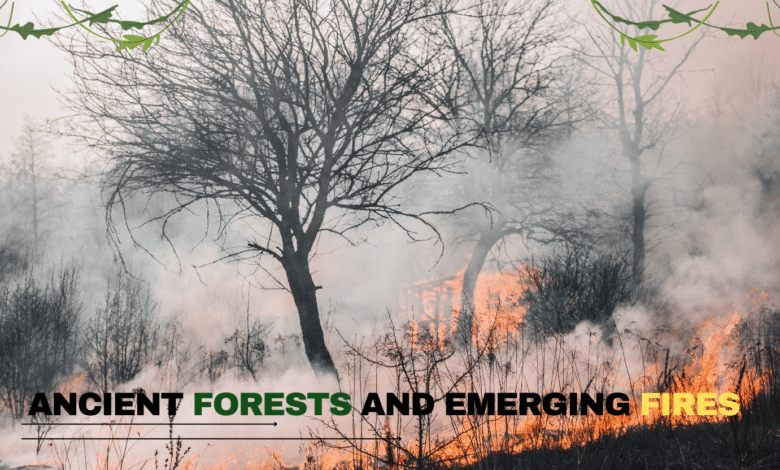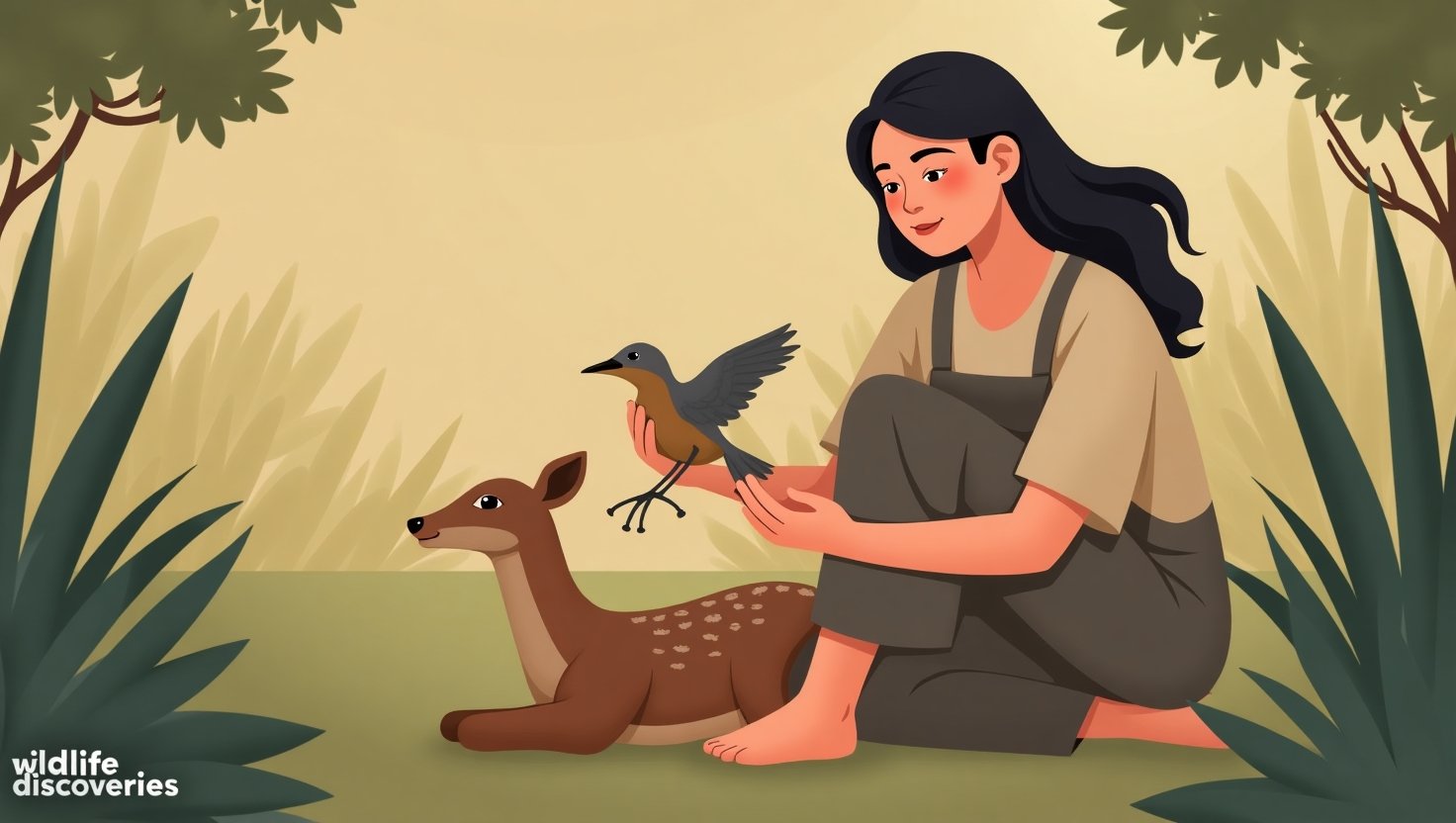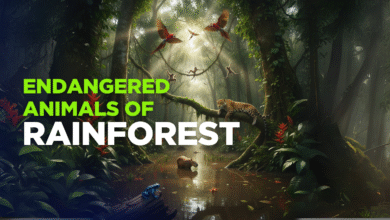
Setting the Scene: The Paradox of Ancient Forest Resilience and the Scale of Today’s Wildfires
For thousands of years, ancient forests, including the quiet boreal woods of the north, towering conifer giants of the west, and sky-scraping mountain ash trees of Australia, have coexisted with fire. They haven’t just survived; they have changed with it. Many trees in these areas depend on fire as part of their life cycle. Some develop thick bark to endure heat, others regrow from their roots after a burn, and some actually need fire’s heat to release their seeds. In pine savannas, for example, species like Jack pine and lodgepole pine require fire to open their cones. Even the great coast redwoods thrive when flames clear the underbrush, creating space and nutrient-rich ash for new life.
Fire has never been solely destructive in these ecosystems; it has been essential. When it cycles through a forest, fire helps maintain a healthy balance. It breaks down dead plant matter, recycles nutrients into the soil, allows sunlight to reach the forest floor, and controls invasive species. Over time, this process creates a variety of habitats at different stages of growth, supporting a wide range of plants and animals.
But today, this natural rhythm is off course. Instead of regular, low-intensity fires, many of these forests now face fewer but much more intense blazes. The reasons are complex: decades of fire suppression policies, rapid urban expansion into wildlands, and, most pressingly, a warming climate. These changes have turned fire from a life-enriching cycle into a serious threat.
Consider Australia’s mountain ash forests. Once thought to be almost untouchable, they are now among the ecosystems most at risk. Scientists predict that rising temperatures and increasingly severe fires could destroy a quarter of their ancient giants in the coming decades. This impact goes beyond trees; it threatens entire ecosystems that struggle to recover. This brings us to a central paradox: the very forests that evolved with fire now face destruction from it.
Defining Scope: From Millennia-Old Fire-Dependent Ecosystems to Current Forest Management Dilemmas

This article looks at a growing issue: how do we protect ancient, fire-adapted forests in a world where wildfires are hotter, larger, and more destructive?
Across the globe, forests have developed alongside fire. From the vast boreal regions of Canada to eucalyptus woodlands in Australia and oak-pine forests in North America, fire has long been crucial in shaping the land. Over time, trees and plants have developed traits that not only help them survive fire but also rely on it. Thick bark protects trees from heat. Some species sprout again almost immediately after fire passes. Others only release their seeds once flames have cleared the area for new growth. These adaptations are not mere accidents of evolution; they are the result of deep, long-standing relationships with fire.
In healthy ecosystems, periodic fire creates space, removes dead material, returns nutrients to the soil, and promotes the growth of sun-loving species. Without it, forests can become overcrowded and stressed. Dense canopies block sunlight. Accumulated underbrush turns into dangerous fuel. The absence of natural cleansing cycles makes the landscape more vulnerable to pests, diseases, and extreme events.
However, over the last century, that cycle has been disrupted. Fire has been viewed as a threat, something to eliminate rather than manage. Colonial-era forest policies focused on timber production and land control led to widespread fire suppression. Communities that practiced cultural burning were often silenced or excluded. As natural fires were put out, fuel kept building up.
When fires do ignite, they are no longer part of the ecosystem’s natural rhythm. They are fast, hot, and out of control, often racing through areas that haven’t burned in decades. Add climate change, with rising temperatures, longer dry spells, and more intense storms, and the problem worsens.
We are at a turning point. Fire, once beneficial to these forests, has turned into something more dangerous. The question now is whether we can restore balance to fire. Should we reintroduce it in a controlled manner, and if so, who should take responsibility? Scientists, Indigenous communities, land managers, and governments all have different perspectives, and their visions for the future of our forests do not always agree.
As we will examine in this article, the challenge isn’t just about stopping the next big wildfire. It involves reassessing our entire relationship with fire, forests, and how we care for the natural world.
Ancient Forests and the Role of Fire
Fire as an Ecological Architect
A long time ago, forests didn’t always appear dark and crowded like some do today. They resembled large, green parks with tall, strong trees spaced out and plenty of sunny spots for flowers, grass, and animals. Do you know what helped maintain that environment? Fire.
But not the frightening, massive fires we picture now. These were gentle, low fires that moved slowly through the forest. Sometimes lightning ignited them, and other times, the people living in the forests set them intentionally. They understood that fire could be beneficial. It cleared away small trees and bushes that crowded the larger trees, created paths for walking and hunting, and even helped tasty plants grow for food. Thanks to these fires, forests remained healthy, open, and rich in various plants and animals.
When these helpful fires were stopped, the forests changed. Small trees grew too closely together, blocking sunlight. The flowers and grasses started to vanish, and the forest became too dense. Now, when a fire does occur, it burns too hot and too strong, damaging the forest instead of aiding it.
Fire-Vegetation Dynamics & Alternative Stable States
Fire and plants interact like dance partners. When they work together, the forest stays balanced and thriving. Grasses help carry small fires, and those fires prevent the trees from becoming too crowded. In turn, the trees allow enough sunlight for the grasses to grow again. This creates a healthy cycle.
But if the fires stop, the dance changes. Too many trees and bushes grow, the grass disappears, and the forest becomes darker and less welcoming for many plants and animals. Once this occurs, it’s difficult to restore the old forest. It’s similar to tipping over a block tower; it’s much easier to keep it standing than to rebuild it. The key is not just any fire, but the right kind of fire. Small, gentle fires that occur frequently and in various locations keep the forest alive, vibrant, and full of life.
The Rise of Emerging Mega-Fires

Climate change and hotter, drier conditions.
Forests are like living, breathing neighborhoods filled with plants, animals, and trees. Just like people, they need a balance of food, water, and comfortable weather to stay strong and happy. But today, the world is changing. The air is becoming hotter, the rains don’t always come on time, and the soil often feels thirstier than before. Imagine standing in front of a hair dryer all day—that’s how the forest feels when the sun burns too hot and the winds blow dry.
When trees, leaves, and grasses lose too much water, they turn brittle, almost like crackers or dry toast that crumble at the slightest touch. Now picture a tiny spark—a cigarette butt, a lightning strike, or even the heat from machinery—landing on this “dry toast.” In an instant, the spark becomes a flame, and the flame spreads quickly from one dry leaf to another. Hot winds act like a giant fan, pushing the flames faster and farther. What might have once been a small, short fire now grows into a raging mega-fire, stretching across hills and valleys, consuming everything in its path. The forest, which once relied on gentle, refreshing fires to stay balanced, is now vulnerable to overwhelming blazes that it cannot control.
Legacy of fire suppression policies.
For over a hundred years, people believed that all fires were bad. They saw smoke, they saw flames, and they rushed to put them out—every single time. At first, this seemed like a smart idea, protecting trees, animals, and people. But over time, the forest began to suffer in ways people did not expect. Without its small, natural fires, the forest couldn’t clean itself. Year after year, fallen branches, piles of needles, and dead leaves collected on the ground, layer upon layer, like toys scattered across a bedroom floor and never picked up.
At first, it didn’t seem like a big problem. But then, when a fire finally did come, it didn’t just burn a little bit of mess—it had a mountain of fuel waiting for it. The flames roared upward, climbing into the treetops, turning small flickers into walls of fire. Instead of staying low to the ground, where the forest could survive, the fire became hot, destructive, and impossible to manage. What people thought was “protecting” the forest had actually created a dangerous trap. The forest needed its little clean-up helpers all along, but because those fires were shut out for so long, the mess became too big and too dangerous.
Human encroachment into fire-prone ecosystems.
Forests are beautiful places to live, explore, and build memories. More and more, people are building homes along the forest edge, setting up campsites under tall pines, and creating roads that cut through wild lands. It looks peaceful—tiny wooden cabins tucked between green trees, children playing near streams, hikers roasting marshmallows by a campfire. But there’s a hidden risk. Living so close to the forest is like setting up your picnic right in the middle of a playground where kids are throwing balls around—sooner or later, something is bound to hit.
Cars driving through dry grass, power lines sparking in the wind, forgotten campfires, fireworks, or even lawn equipment can all be the “one small spark” that starts a fire. When people live close to fire-prone lands, the chances of fires starting grow higher and higher. And when they do start, firefighters face a hard choice: protect people and their homes first, or let the fire move naturally through the forest as it once did? This tug-of-war makes fighting fires more complicated, and it means the forest often doesn’t get the kind of fire it actually needs. Humans bring love, care, and community to the forest’s edge, but they also bring risks the forest never had to face before.
Iconic Trees Under Threat
Among the many wonders of the forest, ancient trees are perhaps the most breathtaking. They are like wise grandparents, standing tall through centuries, watching generations of animals, birds, and even people pass by. The Doerner Fir, one of the tallest trees in the world, is such a giant. With its towering height and thick, rugged bark, it seems invincible—almost like a knight in shining armor, guarding the forest below. That strong bark acts like a shield, keeping out the heat of smaller, gentle fires that lick at its base.
But even knights have weaknesses. Deep inside these ancient trees are soft spots—cracks, hollows, and scars left behind by storms, lightning, or time itself. When a mega-fire comes roaring through, it is no longer a friendly visitor. The flames grow tall enough to lick at the branches high above, or they find their way into hidden hollows. Once inside, the fire burns the tree from the heart outwards. Imagine a teacup that looks strong on the outside, but when hot soup seeps into a tiny crack, the whole cup begins to weaken and break. For these iconic trees, the fire that once cleaned and protected the forest becomes a threat to their very survival.
This is where forest care becomes delicate, almost like balancing on a rope. On one hand, the forest needs small, gentle fires to stay healthy. On the other, the elders of the forest—the giant, ancient trees—need extra protection from the fierce flames that now sweep the land. Foresters and scientists often create safety circles around these giants, carefully clearing away brush, sticks, and dry fuel. It’s like sweeping around a campfire to make sure the flames don’t jump too high. Others plan controlled burns at the right times of year, when the weather is cool and damp, so the fire moves softly rather than fiercely.
Looking after a forest is no simple task. It requires wisdom, patience, and respect for both the small plants and the towering giants. The Doerner Fir and trees like it remind us of the deep history written in the rings of wood. They have seen centuries of storms, droughts, and gentle fires. But now, with mega-fires rising, their survival depends on whether we can learn to work with fire again—not as an enemy, but as a tool, a helper, and a partner in the ongoing story of the forest.
Historical Shifts in Fire and Forest Management

Colonial Legacies and Fire Suppression
A long time ago, many Indigenous peoples used small, gentle fires to care for the land. These careful burns were like regular garden clean-ups: they made paths easier to walk, helped tasty plants grow, kept bugs in balance, and created sunny places where animals could find food. People in North America, India, and Australia knew when to light these little fires—often in cooler seasons or in small patches—so the land stayed healthy and safe.
Then came colonial rulers with different ideas. They saw smoke and flames and thought, “All fire is bad.” New forest rules were made that said, “No burning!” The careful, traditional fires that families had used for generations were outlawed. In many places, lighting a small, helpful fire could get someone punished. Forest officers were told to stamp out every flame, even the tiny ones that cleaned up the forest floor.
When those gentle cultural fires stopped, the land began to change. The forest couldn’t do its regular tidy-up anymore. Dry leaves and sticks piled higher each year. Paths closed up with thorny shrubs. Shops of nature—berries, roots, and grasses—became harder to find. The wisdom of Elders, who knew where, when, and how to burn safely, was pushed aside. Over time, this didn’t just change the forest—it also hurt the bond between people and place. Children grew up without learning the old skills, and communities lost a powerful tool for caring for their homelands.
The long-term effects were heavy. Without traditional burning, some plants that loved a little sunshine and warmth started to disappear. Animals that needed open, grassy places lost their cozy homes. And when fire finally returned—often by accident or lightning—it arrived as a big, fast, scary fire, not the calm helper it once was. By banning the small good fires, people accidentally saved up fuel for much bigger bad fires later on.
Ecological Consequences of Suppression
When you never let the forest do its small clean-ups, mess piles up—like a bedroom where toys are never put away. All those dry twigs, leaves, and fallen branches become a giant stack of kindling. This is called fuel build-up. With so much fuel, a spark can grow into a hot, racing fire that reaches into the treetops.
Another big change is who gets to grow. Without gentle fires, shade-loving, fire-sensitive trees and shrubs move in. They spread under the big trees and make the woods darker and thicker. The sun can’t reach the ground, so grasses and wildflowers—the bright, low plants that need light—start to fade away. This makes the forest more simple and less colorful: fewer kinds of plants, fewer kinds of bugs, and fewer kinds of animals. It’s like turning a mixed-up, lively playground into one single slide—less fun for everyone.
Example: the decline of fire-dependent oak ecosystems.
Oaks are like friendly giants that love sunshine and space. Their babies (little oak seedlings) need light and warm soil to grow strong. In the past, regular small fires kept the ground open by gently clearing out crowded shrubs and thin, shade-making trees. That gave baby oaks the room they needed to stretch their leaves toward the sky.
But when fires were stopped, thick shade took over. Shade-loving trees grew up fast, and the floor filled with layers of leaves that stayed damp and heavy. Baby oaks struggled to sprout, and even when they did, they couldn’t get enough sunlight to grow tall. Over time, oak woodlands and savannas—once open, sunny, and full of flowers, butterflies, and birds—turned into darker forests with fewer kinds of plants and animals. The oaks, which had been the friendly anchors of these places, slowly lost ground.
So what does the forest need now? Kind, careful help. In many places, people are learning again from Indigenous knowledge—using small, well-planned burns and gentle clearing around special trees. These actions bring back sunlight, reduce the heavy fuel on the ground, and give baby oaks and wildflowers a chance to return. With patient, thoughtful care, the forest can become lively and balanced again—many voices in one chorus, instead of just one lonely note.
Indigenous Cultural Burning and Community Stewardship
Global Indigenous Practices
All around the world, Indigenous peoples have treated fire as a friend rather than an enemy. For them, fire acted like a gentle helper that cleaned the forest floor, made space for flowers, and kept the land vibrant. Instead of allowing large, uncontrolled fires to occur, they lit small, controlled ones. These small fires cleared away dry leaves and twigs, opened up areas for sunlight to reach the ground, and invited birds, animals, and new plants to flourish. It was like giving the forest a gentle trim so it could grow back healthy and full of life.
California and the Revival of Traditional Stewardship
In California, many Native tribes, including the Yurok, Karuk, and Amah Mutsun, are restoring this ancient way of caring for the land. For them, cultural burning goes beyond fire management; it embodies respect, tradition, and connection. When they start small fires, they do so with songs, prayers, and stories, reminding everyone that the land is part of their family. These fires help specific plants grow—plants for food, medicine, and weaving baskets. At the same time, they protect the forest from dangerous mega-fires. Children observe and learn from elders, much like grandchildren learning family recipes, ensuring this knowledge gets passed down. It is a way of saying, “We are caretakers, not just visitors.”
India: Community Forest Rights and Stewardship
In India, villages are also reclaiming their roles in caring for forests. With the Forest Rights Act, people living near the forest are recognized as its protectors. For them, the forest represents more than just trees; it encompasses home, kitchen, pharmacy, and temple all at once. Communities come together to decide when and where to safely burn small patches, often combining their traditional knowledge with modern methods like firebreaks to prevent flames from spreading. Picture neighbors sweeping a shared courtyard: everyone helps, and everyone benefits. By merging the old with the new, these communities keep their forests safe, green, and alive, not only for themselves but also for the children who will one day inherit them.
Policy, Innovation, and Future Pathways

Indigenous Knowledge and Institutional Reform
Forests are like ancient classrooms. For thousands of years, Indigenous people have served as the best teachers, knowing how to nurture the trees using small, gentle fires. These fires were never meant to cause harm; they acted like a broom, clearing away dry leaves to help new plants grow and keep the forest safe.
However, outside rulers arrived long ago and imposed strict laws forbidding any fires, neglecting the wisdom of the forest’s original caretakers. Today, many are realizing these old rules no longer work. Gradually, new laws are being created that respect Indigenous wisdom once more. It’s similar to inviting wise grandparents back into the classroom to share their knowledge, while also incorporating modern science so that both old and new ideas can come together.
Technology & Community Participation
Imagine the forest as a huge playground. To keep it safe, we need both vigilant eyes and caring hands. New tools like drones overhead, satellites in space, and fast-thinking computers help us detect fires early. But even the smartest machines can’t replace the people living near the forest. Local communities know every path, every tree, and even where the animals like to hide. When they team up with technology, the forest receives extra protection. The machines can quickly alert, “Look, there’s smoke!” and the community can act before the fire spreads. It’s teamwork—like robots and neighbors working together to keep the playground safe.
Toward Integrated Fire–Forest Management
The future of forests is like a large family picnic. Everyone is welcome: Indigenous elders sharing ancient stories, scientists with innovative ideas, firefighters bringing their skills, and neighbors who know the land intimately.
Each person contributes their best dish. Elders share knowledge of careful burning, scientists offer maps and tools, firefighters provide bravery, and communities bring care and love. Together, they create a well-rounded meal—a way to manage the forest that is strong, fair, and healthy. This approach is called “integrated” management. It means not choosing between old methods and new ones, but blending them together. When we do this, forests remain greener, animals keep their homes, and people feel safer living nearby. It’s like everyone holding hands around the forest, committing to care for it together.
Conclusion
Forests are much more than just groups of trees. They are living homes filled with history, wisdom, and life. For a long time, people tried to control fire without truly understanding the land. This often led to bigger problems, such as massive wildfires and weakened forests. However, we are slowly relearning something Indigenous communities have always known: fire, when used carefully, can be a gentle friend.
The way forward isn’t about choosing between tradition and modern science; it’s about bringing them together. Indigenous knowledge teaches us respect and balance. Modern tools like satellites, drones, and community teamwork provide speed and strength. Together, they form a strong approach to keep forests healthy, wildlife thriving, and people safe. To learn more about the beauty of nature and the wonders of wildlife, visit Wildlife Discoveries—a place to connect with the natural world.
In the end, protecting forests is like protecting our own family. They provide clean air, fresh water, shade, and beauty. If we care for them with both wisdom and heart, the forests will continue to stand tall like ancient guardians watching over us, and young saplings promising a greener, safer future.




